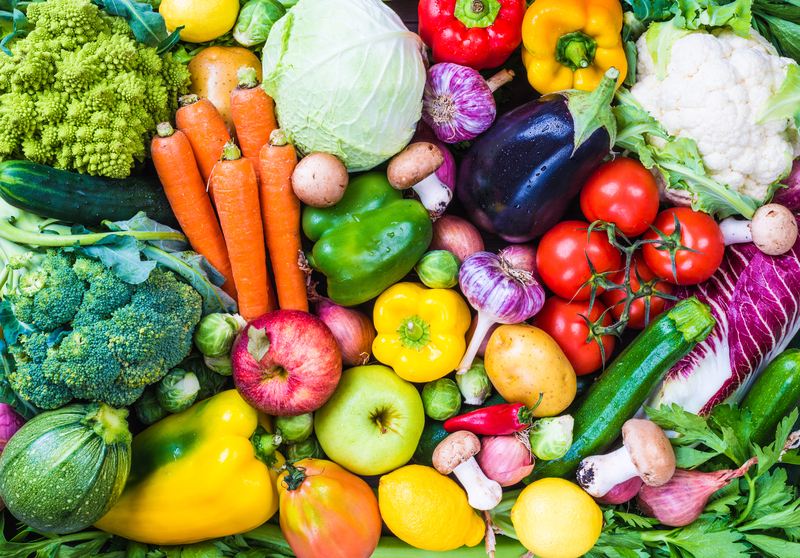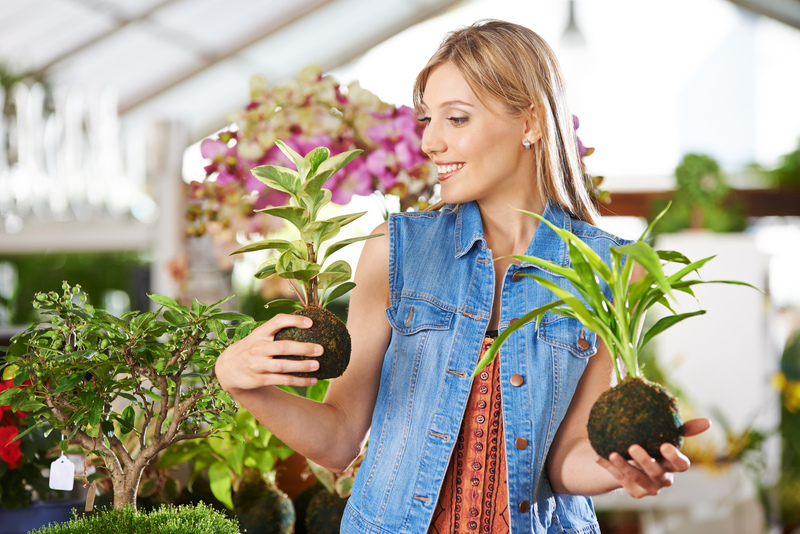The Rise of Vertical Gardening in Modern Homes
Posted on 22/06/2025
The Rise of Vertical Gardening in Modern Homes
Vertical gardening is quickly transforming the way urban dwellers and home enthusiasts interact with nature. Once a unique concept reserved for urban parks and commercial buildings, vertical gardens are now sprouting up inside living rooms, balconies, patios, and even kitchens. This article dives deep into the increasing popularity of vertical gardening, its benefits, creative ideas, and practical tips for integrating it into your contemporary living space.

What Is Vertical Gardening?
At its core, vertical gardening refers to a method of cultivating plants on a vertically suspended panel or structure, using soil or hydroponic systems. Unlike traditional horizontal gardens, vertical gardens grow upwards, maximizing limited space and creating striking living walls. This trend is also commonly known as green wall gardening, living wall design, or vertical plant displays.
Why is Vertical Gardening Gaining Popularity?
- Space Efficiency: Urbanization and shrinking homes demand smart use of every inch. Vertical gardening in small homes allows residents to enjoy greenery without sacrificing floor space.
- Modern Aesthetics: Vertical gardens add elegance and a touch of modernity to interiors and exteriors, transforming blank walls into captivating natural artworks.
- Health Benefits: Purifying indoor air, reducing stress, and boosting mental well-being are among the health benefits of vertical gardening that appeal to modern homeowners.
- Sustainability: As the sustainability movement grows, eco-conscious homeowners embrace vertical plant systems to grow herbs, vegetables, and even edible flowers at home.
- Customization: Vertical gardens can be tailored for any environment, scale, or style, allowing homeowners to express creativity and personalization.
Main Advantages of Vertical Gardening for Modern Homes
Maximizing Limited Space
Urban homes and apartments often have restricted outdoor space. Vertical gardening in modern homes transforms balconies, patios, and even indoor walls into lush, productive areas. Even a small wall can hold dozens of plants, allowing urban gardeners to harvest fresh herbs, vegetables, or ornamental plants regardless of floor area.
Improved Air Quality
Plants in a vertical garden system act as natural air filters, removing toxins such as formaldehyde and benzene. By increasing the variety and number of indoor plants, homeowners enjoy cleaner, oxygen-rich air, which is especially vital for those living in high-pollution urban spaces.
Temperature Regulation and Energy Efficiency
Vertical gardens serve as natural insulation. On exterior walls, they lower heat absorption, keeping homes cooler in the summer and reducing reliance on air conditioning. In colder months, they help insulate interiors, minimizing heat loss and cutting energy costs.
Aesthetic and Psychological Benefits
A vibrant, green wall enhances visual appeal and imbues interiors with tranquility. Scientific studies show that exposure to greenery lowers stress, enhances mood, and increases productivity. Vertical garden walls therefore offer not only beauty, but a boost to overall well-being.
Popular Vertical Gardening Solutions for Homeowners
Living Wall Planters
Among the most common vertical gardening systems are modular planters that attach directly to walls or fences. Available in materials such as plastic, felt, ceramic, and metal, these planters accommodate everything from small succulents to trailing vines and compact vegetables.
Trellises and Climbing Structures
Using trellises against walls or free-standing frames, homeowners can grow climbing plants like jasmine, roses, peas, and beans. These structures create green privacy screens, outdoor dividers, or lush floral displays.
Pocket Gardens
Textile pockets, often made from recycled felt, line walls and offer dozens of slots for herbs, leafy greens, or flowers. They are lightweight, easy to irrigate, and highly flexible for both indoor and outdoor vertical plant arrangements.
Recycled and Upcycled Vertical Gardens
For eco-conscious DIY enthusiasts, old pallets, plastic bottles, or unused shoe organizers provide creative frameworks for vertical gardening at home. These sustainable approaches repurpose everyday objects into thriving green walls.
Hydroponic Vertical Gardening Systems
Modern hydroponic solutions use no soil, instead feeding plants nutrient-rich water through tubes or channels. Hydroponic vertical gardens are ideal for growing high-yield crops indoors, such as lettuce, strawberries, or culinary herbs, free from soil-borne pests.
Getting Started: How to Create a Vertical Garden in Your Home
Step 1: Assess Your Space and Goals
First, determine where your vertical garden will go. Is it indoors, on a balcony, or in a courtyard? Consider your available sunlight, proximity to water, weight-bearing capacity of your walls, and whether you want edible crops or ornamental plants.
Step 2: Choose the Right Vertical Garden Structure
- For small apartments or kitchens, modular wall planters or pocket gardens are efficient.
- Trellises and framed structures suit outdoor patios or balconies.
- Freestanding green wall systems work well in spacious living rooms or home offices.
Step 3: Select Suitable Plants
When picking plants for your vertical garden, choose species that thrive in your environment. For sun-drenched balconies, opt for succulents, flowering vines, or culinary herbs. In shadier spots, ferns, pothos, and philodendrons are resilient choices. Always group plants with similar water, light, and nutrient needs.
Step 4: Prepare for Irrigation and Maintenance
Efficient watering is crucial for healthy vertical gardens. Many homeowners install drip irrigation systems to ensure even moisture without overwatering. If hand-watering, ensure easy access to every plant pocket or module.
Step 5: Installation and Enjoyment
Secure your planter frames or pockets to the wall, fill them with a lightweight potting mix, plant your selections, and water thoroughly. Over time, enjoy watching your living wall flourish. Remember to prune and feed regularly for continued growth and vibrancy.
Best Plants for Vertical Gardening in Modern Homes
- Herbs: Basil, parsley, mint, thyme, oregano, and chives. Fresh herbs are not only useful in kitchens but also emit delightful aromas.
- Leafy Greens: Spinach, kale, Swiss chard, lettuce, and microgreens thrive in vertical setups, providing daily harvests.
- Succulents: Low-maintenance and visually stunning, succulents make excellent choices for indoor living wall displays.
- Flowering Plants: Petunias, nasturtiums, pansies, and marigolds offer splashes of color and pollinator attraction.
- Climbing Vines: English ivy, pothos, philodendrons, and jasmine can sprawl elegantly down from higher modules.
- Ornamental Grasses: Dwarf varieties lend texture and movement to modern vertical gardens.
Innovative Ideas for Designing Your Vertical Garden
Artistic Living Walls
Design bold patterns or shapes with contrasting foliage colors for a stunning indoor accent wall. Some homeowners even incorporate letters, logos, or geometric forms for a bespoke look.
Culinary Vertical Gardens
Install a vertical herb garden in your kitchen or balcony for fresh garnishes year-round. Use pocket organizers or stackable pots for maximum plant diversity in minimal space.
Edible Facades
Grow strawberries, cherry tomatoes, or compact vegetables outside windows for a blend of beauty and bounty. Edible living walls also attract beneficial pollinators to your home environment.
Vertical Succulent Art
Succulents are perfect for intricate, low-water "plant paintings" that require little maintenance. Mix various shapes and colors to create jaw-dropping natural mosaics.
Botanical Dividers
Use tall, free-standing vertical gardens as flexible screens in open-plan apartments or outdoor patios, separating areas while introducing greenery.
Eco-Friendly Aspects of Vertical Garden Design
Modern homeowners are increasingly seeking sustainable gardening methods. By redirecting rainwater, using organic soil amendments, and incorporating native plant species, vertical gardens help reduce water consumption and support local biodiversity. Additionally, reusing recycled materials, such as pallets, for DIY green walls minimizes landfill waste and demonstrates eco-innovation.
Vertical Gardening Trends Shaping Modern Home Design
- Smart vertical garden systems with automated sensors, drip irrigation, and remote controls for optimal growth and convenience.
- Biophilic interior design, integrating living plants into furniture, walls, and ceilings to create calming, nature-inspired spaces.
- Mixed-use living walls that combine edibles, ornamentals, and even wellness air-purifying plants in one display.
- DIY upcycled vertical gardens that use local, recycled, or reclaimed materials for both style and sustainability.
- Year-round vertical gardening inside insulated spaces, using LED grow lights to support winter growth and harvest.
Common Mistakes to Avoid with Home Vertical Gardening
- Overcrowding: Planting too closely can inhibit airflow and promote diseases.
- Poor Drainage: Ensure your vertical system includes adequate drainage holes to prevent root rot.
- Wrong Plant Selection: Combining sun-lovers with shade-lovers disrupts healthy growth. Always match plants with their light requirements.
- Neglecting Maintenance: Regular watering, feeding, and pruning are essential for long-lasting vertical gardens.
- Weak Wall Support: Always verify that your wall can handle the weight of a fully-planted, watered structure to avoid damage or accidents.

Future of Vertical Gardening in Urban and Modern Home Settings
With ongoing innovations in materials, irrigation systems, and plant varieties, the future of vertical gardening is immensely promising. Cities are encouraging green infrastructure, while architects increasingly incorporate living walls for both aesthetics and sustainability. As urban populations grow, the need for compact, efficient, and beautiful plant solutions will only accelerate.
Homeowners who embrace vertical gardening not only enjoy lush, productive, and beautiful environments -- they also actively contribute to healthier urban spaces and more sustainable communities. Whether crafting a modest herb wall or installing a show-stopping living mural, the opportunities for creativity and positive impact are limitless.
Conclusion: The Enduring Appeal of Vertical Gardening in Modern Homes
The rise of vertical gardening in contemporary homes is more than a fleeting trend; it reflects a deeper cultural shift towards integrating nature into daily life, no matter the space constraints. As city living becomes the norm, vertical gardens provide an accessible, attractive, and eco-friendly means of enriching both indoor and outdoor living spaces. Whether you're an experienced gardener looking to experiment or an urban resident craving a green oasis, vertical gardening offers an innovative pathway to a healthier, happier home.
Embrace the vertical garden revolution -- and let your walls come to life!

